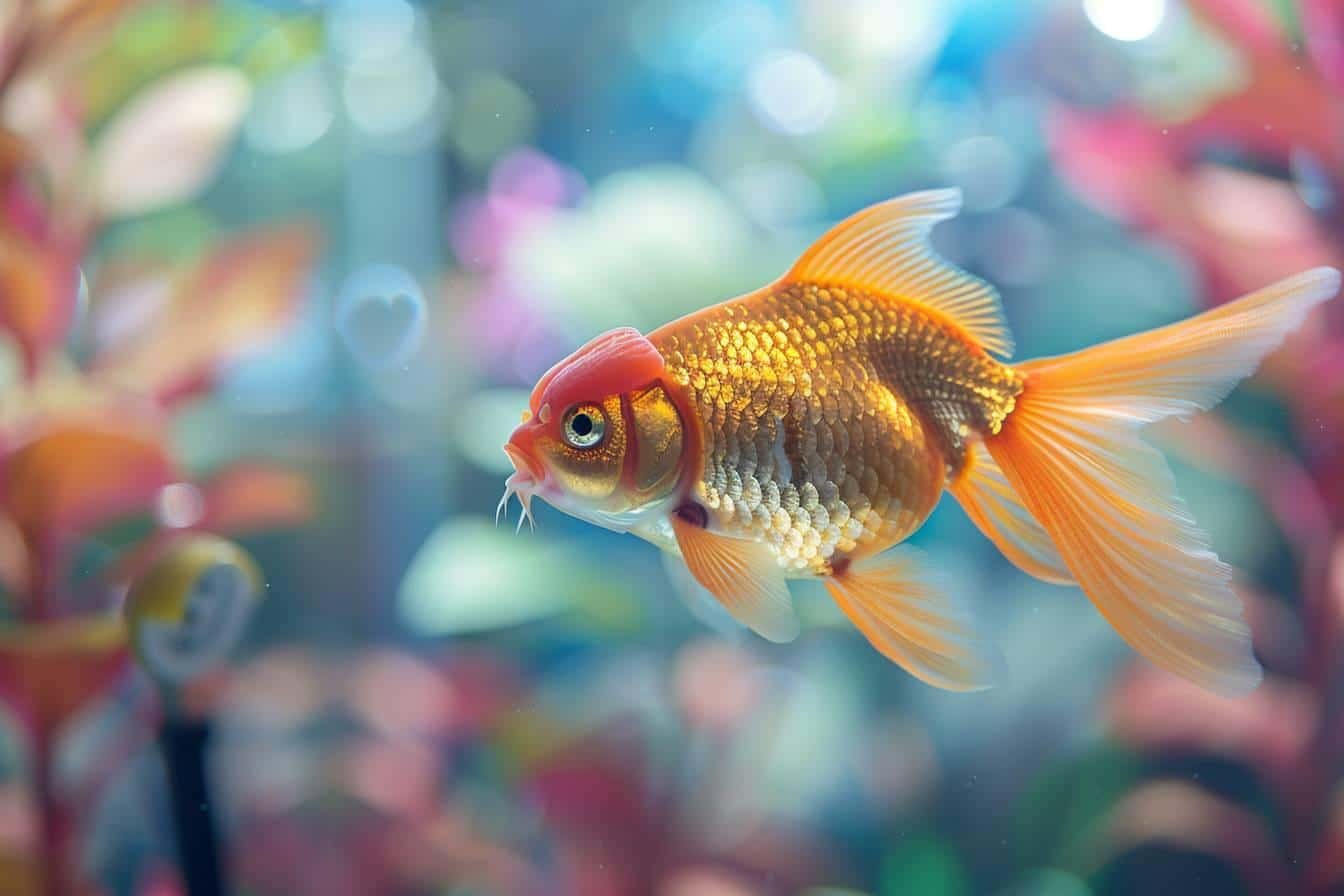Ah, the comet fish ! I love these graceful little swimmers that light up our aquariums. As a pet shop floor manager, I can tell you that they're one of the most popular ornamental fish. Let me tell you more about this charming pond dweller.
Origins and characteristics of the comet fish
A fascinating story
Le comet fish originated in China, where it was bred from the common goldfish (Carassius auratus). That's quite a long way it's come! In fact, its breeding in the United States began in the 1880s. Since then, it has captured the hearts of aquarists the world over.
I've always been fascinated by the story of these little swimmers. A customer once told me how his great-grandfather had brought back his first comets from a trip to Asia. It's crazy to think that these fish have crossed oceans to end up in our aquariums!
A recognisable physique
The comet is distinguished by its elongated body and long caudal fin, which gives it its name. There are two main varieties:
- The simple comet, with a shorter tail
- The Sarasa, recognisable by its large V-shaped tail
These little aquatic jewels can grow to an adult size of 25 to 30 cm, or even 40 to 60 cm in a large pond. In terms of longevity, they can live from 7 to 14 years, and even more than 20 years if you take good care of them. Not bad for a 'small' fish, eh?
A dazzling palette of colours
What I love about comets is their variety of colours. There are reds, whites, oranges, yellows, blacks and even multicoloured calicos. It's a real festival of colour in the aquarium! I even had a customer who collected every possible colour. His aquarium looked like an underwater rainbow!
Living conditions and care for cometfish
A suitable environment
To make sure your comet is as happy as a clam (no pun intended), here's what you need to know:
| Parameter | Ideal value |
|---|---|
| Temperature | 15-24°C (withstands temperatures from 0 to 30°C) |
| pH | 6,8-8,5 |
| Hardness | 5-15°GH |
| Minimum volume | 50-100L per fish |
The comet is a cold-water fish that is robust and easy to rear. However, it is sensitive to sudden changes in temperature. So don't go crazy with the thermometer!
A comfortable living space
Contrary to what many people think, comets are not made for small aquariums. These fish love to swim and need space. A large aquarium or garden pond is ideal. If you opt for an outdoor pool, make sure it is at least 1 metre deep.
For the decor, think "robust and spacious". Hardy plants, a few hiding places and, above all, plenty of room to swim. I've seen some magnificent garden ponds with comets - they're really the best for these fish!
Maintenance and cohabitation
The comet is a fairly easy fish to look after, but it still needs attention. Regular water changes and good filtration are essential. Remember to choosing the right filter the size of your aquarium or pond.
When it comes to cohabitation, comets are peaceful, gregarious fish. It is best to keep them in groups of at least 5 to 6 individuals. They get on well with :
- Other goldfish
- Koi carp
- Non-aggressive cold-water fish
A little anecdote: I had a customer who had put a comet in with tropical fish. The poor comet ended up getting sick because the temperature was too high. Moral of the story: to each his own!

Daily life and reproduction of the comet fish
Comets are active and curious fish. It's a real pleasure to watch them swimming gracefully around your aquarium or pond. They are omnivores and accept a wide variety of foods: flakes, pellets and fresh food. A varied diet is the key to keeping comets in top form!
Comet reproduction is an interesting spectacle. In spring, the females lay their eggs among the plants. The parents don't look after the eggs, so if you want to raise the fry, you'll have to separate them. I attended a comet egg-laying event once, and it was truly magical!
Ultimately, the comet fish is a wonderful aquatic companion. Robust, colourful and full of life, they add a touch of grace to any aquarium or pond. With the right care, these little swimmers will be with you for many years, providing you with an ever-changing aquatic spectacle.
Sources :
